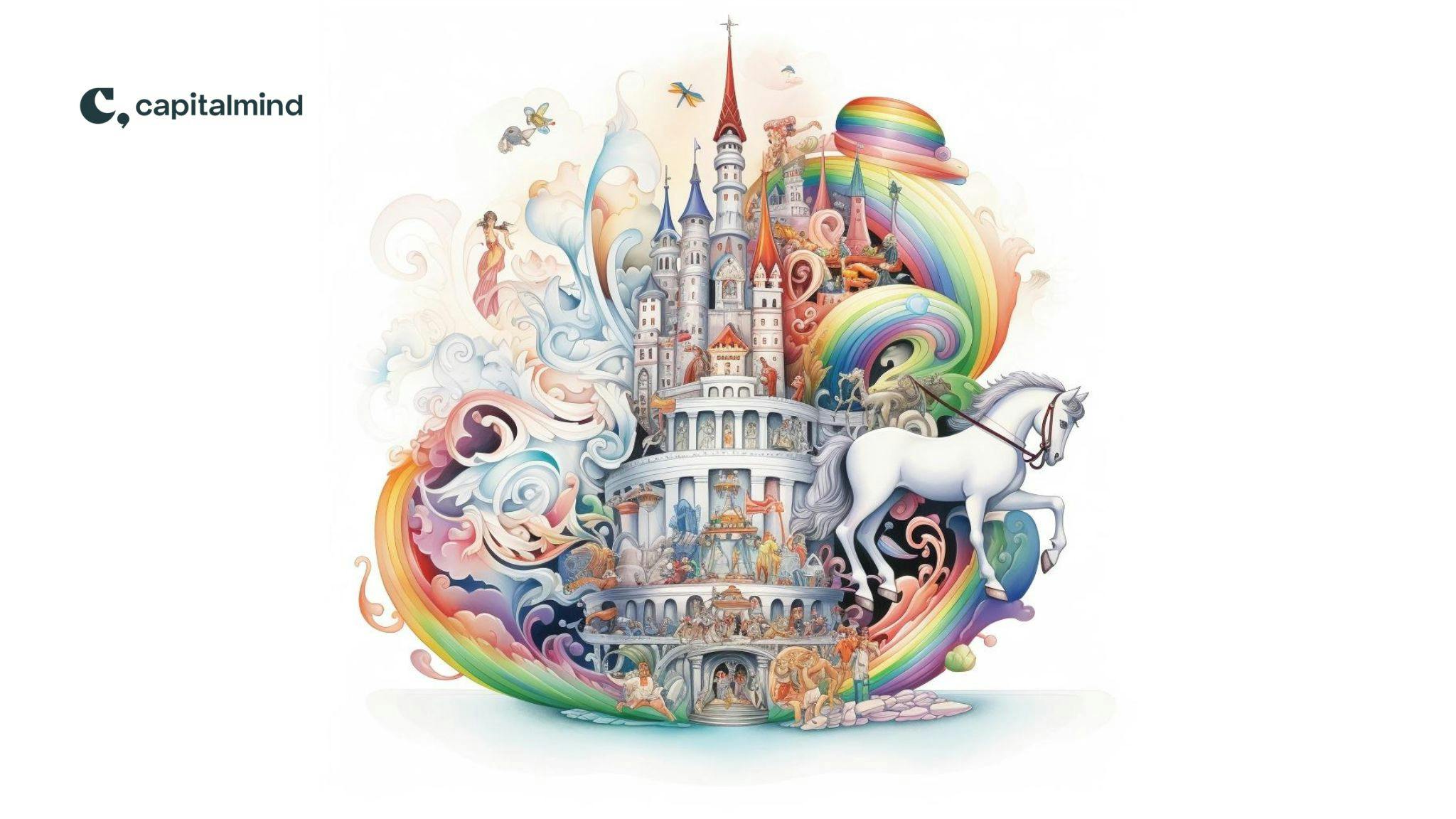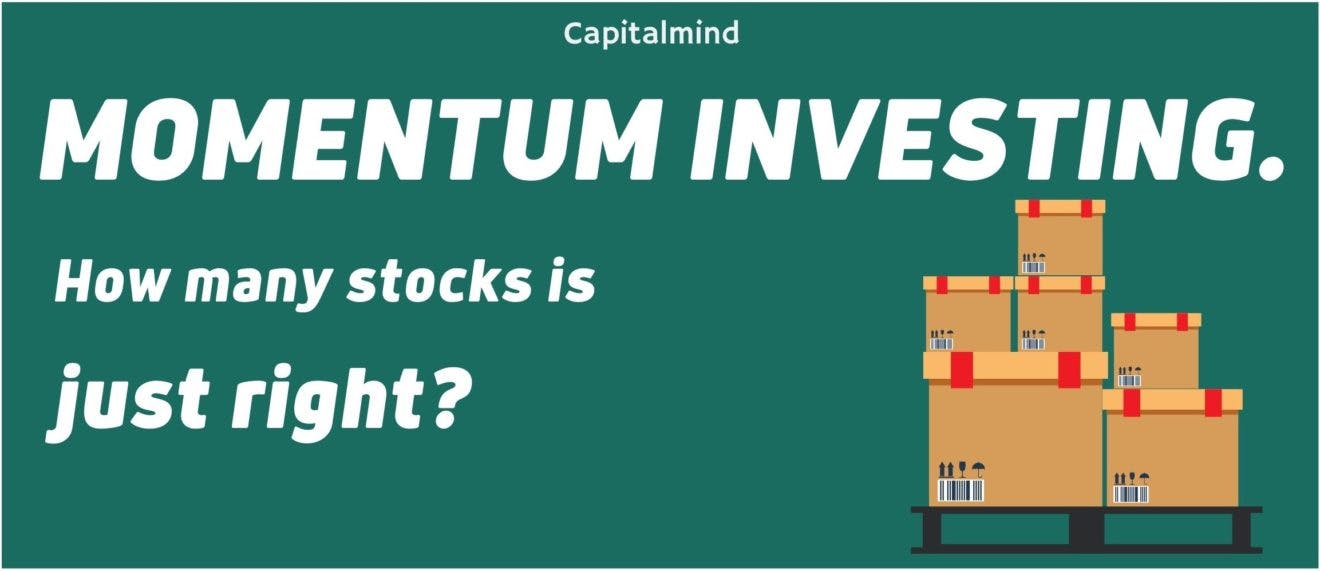(category)Charts & Analysis
Where do Superhero stocks come from?Where do Superhero stocks come from?
How easy is to find 10x stocks? We'll call them Superhero stocks. Turns out, such stocks are more frequent than we might think. Of over 1,000 companies ten years ago, nearly 15% grew market cap by 10x or more. A few by over 100x. What sets this set of superhero stocks apart from the rest? More importantly, do they provide clues to finding the next set of 10x stocks? We relied on data to find out...
Anoop Vijaykumar•

To find a select set of companies with unconstrained growth runways, run by intelligent fanatic management teams, positioned to deliver significant earnings growth—all without needing tons of additional capital.
Having made those high-quality decisions, sit back and let compounding work for a decade as the market gradually catches on to what you had figured out. The potential for life-changing financial gain with intellectual satisfaction and bragging rights. Isn't that every investor's dream?
Of course, we are not talking of just any kind of multibagger. Even the plain old index is nearly a 3-to-4 bagger over the last ten years. Which sounds like a lot when expressed in multiples, but is a 12-14% annual return over ten years.
Here we're talking about the mythical 10-bagger or more. The stock that goes up more than 900% , hence the the x (original investment) + 9x (gain) = 10-bagger. An annualized return of over 26% over ten years. Superhero stocks.
Here's a simplistic illustration of the ending value of an equal-weight 10-stock portfolio that finds between 0 and ten 10x stocks, assuming the remaining stocks give a market return of 12%.
The chart explains why the idea of multibaggers is so fascinating. Having just one stock (out of ten) that goes 10x bumps the ending portfolio value from 3.1x to 3.8x of the initial amount and the portfolio's CAGR by 2.3%. Three or more such stocks and the portfolio almost doubles. A 10-stock portfolio made up of only 10x stocks will, of course, 10x your starting value, an astonishing albeit theoretical wealth-building story.
Imagine if we had a way of identifying a few stocks that, come the year 2032, would have gone up 10x from their prices today. We could realize a fraction of the gains to book that Alaskan cruise while the rest of the snowball continues thundering downhill.
Should-have-Would-have-Could-have analysis aside...
How easy is it to find 10x stocks?
Our analysis showed 165 10x-stocks out of a starting sample of 1095 stocks going back ten years, from 2012 to 2022. That is a decent 15% of the sample.
What the 1095 stocks did over the last ten years:
- 6% of companies did not survive; their market caps went to zero
- 21%(1 in 5) of all companies have lower market caps today than ten years ago. 13% lost more than half their value
- 7% that did have higher market caps failed to beat a basic 5% FD (yes, FD rates were not constant, but this assumption offers a close enough approximation)
- 23% beat FDs but failed to outpace the Nifty TRI
- Nearly 60% of all stocks were unable to beat the Nifty TRI. 40% did.
- 15% grew over 10x. Superhero stocks.
One small problem is that 127 (77%) of those 165 companies had a median market cap of 265 Crores in 2012. Small, even by 2012 standards.
If we limit our starting sample to companies with market caps > 1,000 Cr ten years ago, we have 411 companies, of which 38 grew 10x. That is still a decent 9% " conversion " rate to 10x or more returns over ten years.
The table summarises how the starting sample of 1,000+ and 400+ companies did over the last ten years. Chart numbers are % of the sample.
What was remarkably different in the stocks across the above categories? Ten years is a good stretch of time, so you'd expect stark differences between the 10x stocks and the rest.
Of the 38 10x stocks, 6 were 20-baggers and more, one is a 60-bagger, and one is a whopping 100-bagger, i.e. every Rupee invested in it ten years ago is worth 100 today.
Another 85 company market caps went up 5x or more, thus beating the Nifty by a healthy margin, but we'll focus on the Superhero stocks here.
What jumps out from the list above? First, of course, Bajaj Finance...🤯! Also that this is a diverse set of companies; Chemicals, Auto, Machinery, Consumer Finance, FMCG, Pharmaceuticals, IT Services, and even a Metal company.
Is there something in that set of names that offered a clue ten years ago that these would 10x your capital?
What young 10x company fundamentals looked like
What if we looked at basic fundamental metrics like ROCE, Net Margin, and Sales Growth?
Before scrolling, take a moment to guess what you would expect to see against these 10x stocks in terms of those metrics ten or so years ago.
For reference, the median statistics for the 411 company sample: Early ROCE: 13.8%, Early Net Margin: 8.4%, Early Sales Growth: 13.5%
The table shows the median of the first three years, 2012 - 2015, for each of the 38 companies.
Remember, each of those stocks went up 10x over ten years, a small elite group. Like the US Marines slogan, "The few, The Proud." Naturally, you expect eye-popping numbers on fundamental metrics that drive valuations, especially given the smaller base ten years ago.
The table above shows strong early indicators for companies like the Bajaj twins, PI Industries, Page Industries, and Mindtree but also some distinctly ordinary numbers for JK Cement, Honeywell Automation, Trent, etc. This even ignores some exceptional cases like Tata Teleservices, Asahi India Glass, and Adani Power. Overall, the early fundamentals of 10x stocks are a mixed bag—some standouts, but also some ordinary-looking companies.
The classic mistake so much stock research or any analysis makes is to focus on only the successes. Then tease out common patterns from that small set to conclude that this is why they were successful. Worse, to then extrapolate that companies showing these signs today will be successful in the future.
That kind of analysis leads to self-help books that say, "successful people wake up at 4 am, so to be successful; you'll need to wake up at 4 am", without considering how many unsuccessful people have done the same thing for years.
This is why we look at the rest of our sample to see how they did on those same metrics.
The 10x stocks had in the early years compared to the rest: Clearly superior ROCE, surprisingly inferior Profit Margin, and better (only by a little) Sales Growth.
In terms of market cap growth, the companies that lost more than half their value are the worst of this lot. But note how their early performance wasn't exactly shabby. Scroll up, and you'll see that a few 10x companies had worse numbers over that period.
Think about what that means.
The median company losing more than 50% of its market cap did better fundamentally, at least in the early years than some companies that grew more than 10x in value.
Stock-picking is hard.
What young 10x company starting multiples looked like
Do starting price multiples offer a clue?
Not so much.
Other than a slightly lower Price-Earnings Multiple for the 10x stocks, multiples were more or less similar. 10x stocks had relatively lower Price-Earnings but Price-Book ratios at the higher end of the sample range.
The only indicator might have been for category 6; the still lower multiple the market was paying for stocks that would eventually lose most of their value.
How the fundamentals played out
We looked at select fundamentals in the early years; how about over the entire ten years:
What we know so far about stocks that went up 10x in the last ten years:
- In the early years (of the ten-year window), 10x stocks had better fundamentals but not by a massive distance: meaningfully better ROCE, slightly better sales growth, and inferior profit margin
- Stocks that eventually lost more than half their value had passable metrics in the early years, which then declined significantly.
- Key fundamentals deteriorated across the board for the universe: ROCE, Profit Margin, and Sales Growth. Stocks that saw improving margins also beat the Nifty.
- The 10x stocks retained superior ROCE and Sales Growth from the early years for the ten years under consideration, thus maintaining their fundamental superiority over the rest.
Sustaining superior return on capital while growing sales even slightly faster than most looks like a solid recipe for superior returns. But do they explain supernormal returns of the 10x kind?
The little matter of multiple expansion
Or "rerating", as analysts like to call it.
The table shows median Price-Earnings, Price-Book, and Price-Sales at the start and end of the analysis period.
Overall, market multiples have gone up from ten years ago. If you think of multiples as the point-in-time pessimism or optimism built into stock prices, this means markets today are more optimistic than ten years ago.
The optimism is off the charts for our superhero set of stocks, with 200%+ increases in their respective multiples from ten years ago.
Remember, these are multiples based on current values, so while their sales, earnings, and book values have increased steadily over ten years, the market is willing to pay 3x more for each "unit" (earnings, book, sales) now than ten years ago.
Another way to look at the market cap change for all stocks in our sample is to break it down into earning growth and multiple-change.
Making sense of this chart:
For any company, if 100 is the Market Cap change from 2012 to 2022
- How much came from earnings growth: assuming the same PE as in 2012-13
- How much came from multiple expansion (contraction)
Note this doesn't imply that 2012-13 PE was fair, just that it was the multiple the market was willing to assign at the time.
Therefore, for a 10x stock, had its PE stayed the same as ten years ago, its market cap would only have increased in line with earnings growth, which would mean it would be a 2.4x stock. However, the remaining 7.6x came from multiple expansion.
On the other hand, for the last three sets of stocks as a group, some of their earnings growth would have justified higher prices today had their PE multiples not fallen. Many, of course, saw earnings degrowth, where the fall in share price would have been less had its PE not fallen alongside falling earnings.
So, where do Superhero stocks come from?
Data suggests finding the next set of superhero stocks is not easy but not impossible. Getting into the weeds shows businesses with an advantage that will last for the foreseeable future are a good starting point. But that on its own is not enough.
-
- 10x stocks are more frequent than we might think: Nearly 10% of all stocks have been ten-baggers over the last ten years, 15% if you consider every company worth more than 100 Cr in 2012. If you had built enough randomly constructed portfolios, you would have one or more 10x stocks in there. The harder part would have been to separate them in advance from the ones that will go to zero.
- They can come from anywhere: In our sample, they have a higher weightage in Chemicals and Manufacturing but come from a diverse set of industries from Auto, FMCG, IT Services, etc.
- They are hard to spot in advance based on numbers alone: Most stocks that went on to become 10x had decent but not spectacularly superior fundamental performance in their early years of the duration we analyzed. You probably needed unique insight into the space and leadership operational capabilities (and ethics) to take that leap of faith.
- They mostly prove themselves to be superior businesses: Overall, 10x stocks had meaningfully higher ROCE (Return on Capital Employed) and higher Sales growth than the rest of the sample. Also, their higher ROCEs have persisted* for longer than other companies. * However, most high ROCEs have trended down over the years, in line with the theory that in the long run, more competition enters to drive the return on capital closer to the cost of capital
- But, they wouldn't be 10x more without dramatically higher multiples: Since 3/4th of their market cap increase came from higher multiples, the crowd's perception matters. Now you know why stocks of BAAP (or striving to be) companies have heavyweight marketing behind them.
In short, historically, 10x stocks have been better fundamentally than the others, but only in the way that a Maruti Suzuki Celerio offers better mileage and comfort than an Alto. That difference is worth a premium, but you wouldn't pay 10x more for the former. That's precisely what we seem to have done with companies on that list of 38 superhero stocks.
Some might argue mileage or any single metric isn't why a Bugatti Veyron costs 4x an Aston Martin Vantage, both high-end performance cars. But that argument only makes sense if your stocks also happen to be your status symbols and not efficient mechanisms to deliver a decent return on your capital.
This post is for information only and should not be considered a recommendation to buy or sell stocks. Let us know what you think, @CalmInvestor and @capitalmind_in. The analysis is based on data from reliable sources, but do point out any discrepancies you find.
Further Reading:
Does buying expensive Quality stocks work? - The US Nifty 50 stocks of the 1970s
On Market timing: What if you were the luckiest investor in India?
Related Posts
Make your money work as hard as you do.
Talk to a Capitalmind Client AdvisorInvesting is not one size fits all
Learn more about our distinct investment strategies and how they fit into your portfolio.
Learn more about our portfoliosUnlock your wealth potential
Start your journey today



